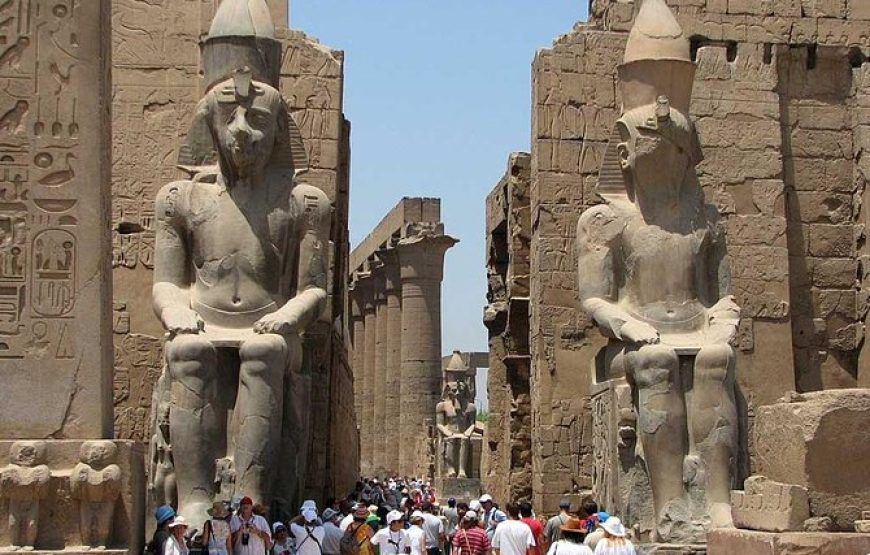from 0 review
No Cancellation
Unlimited
Francais, German, Russian









Aptly called Ipet-Sut “The Most Select of Places” by the ancient Egyptians, Karnak Temple was the most important temple in Thebes (modern Luxor), in Upper Egypt. This was where the cult of the great god Amun of Thebes was conducted. As such, it was extremely wealthy and its priesthood held great political power.
Thebes was the city that the line of kings who reunified Egypt after the First Intermediate Period hailed from. It thus became one of the most important cities, a position that it would continue to hold throughout the majority of ancient Egyptian history. The importance of Amun rose in tandem with the city’s rise to prominence. From the earliest evidence for it from the reign of Intef II (c.2112–2063 BC), before even the beginning of the Middle Kingdom (c.2055–1650 BC), to the Graeco-Roman Period (332 BC–395 AD), this temple was accordingly lavished with royal attention in the form construction projects, ritual equipment and other necessities. Nearly every king from the New Kingdom (c.1550–1069 BC), Egypt’s age of empire, left his mark here.
The temple is located on the east bank of Luxor. Like most ancient Egyptian temples, it is built on an east–west axis. Ancient Egyptian temples were models of the cosmos, and this layout meant that they mirrored the sun god’s trajectory through the sky. Rather uniquely, however, it also possesses a north–south axis, which orients it towards another temple, the abode of Amenemopet known today as Luxor Temple. This was a different version of Amun specific to south Luxor. The two temples were linked by a processional way lined with sphinxes. This was used in one of the most important celebrations of the ancient Egyptian calendar, the Opet Festival.
In addition to the ancient Egyptians’ mastery of stone, which is evident everywhere in the scale of the monuments, the reliefs covering their walls, and the statues populating them, several highlights are worth mentioning. The world-famous Great Hypostyle Hall is a forest of 134 columns. These massive columns have a height of 15 meters, aside from the larger, central, twelve, which stand 21 meters tall. The hall may have been begun by Amenhotep III (c.1390–1352 BC; Eighteenth Dynasty), but the decoration is from the reigns of Nineteenth Dynasty kings Sety I (c.1294–1279 BC) and his son Ramesses II (c.1279–1213 BC). A magnificent obelisk of Hatshepsut (c.1473–1458 BC) in a nearby hall stands at a colossal height of nearly 30 meters. At the eastern end of Karnak is the Akhmenu, a temple by Thutmose III (c.1479–1425 BC) dedicated to the cults of various deities, his royal predecessors, as well as his own cult.
Karnak was in reality a complex of temples. The enclosure walls include a full temple to Khonsu in the south-western corner, next to which is the Opet temple, which was built in the Graeco-Roman Period for Opet, a hippopotamus goddess of childbirth. The beautiful sacred lake, where priests purified themselves before carrying out temple rituals, can still be appreciated today. Many more, smaller, temples and chapels dot the landscape of Karnak, making it a veritable open-air museum.